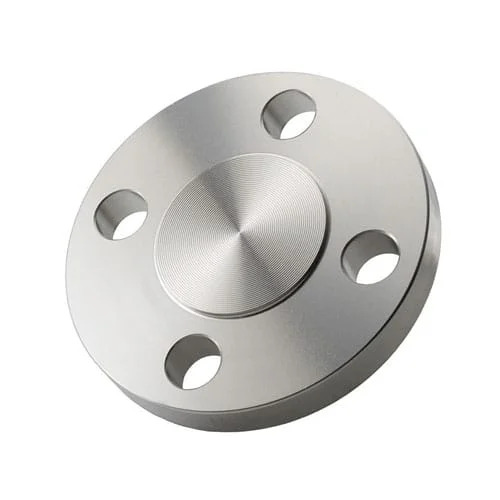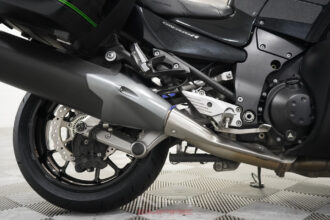Slip on flange are an essential component in piping systems, providing a secure and durable connection between pipes. These flanges are designed to slip over the pipe and are widely used in various industrial applications. In this comprehensive guide, we will explore the features, advantages, and uses of slip-on flanges, focusing on the key terms and concepts associated with them. Whether you are new to flanges or looking to expand your knowledge, this post will provide all the details you need to understand slip-on flanges and their role in piping systems.
What is a Slip-On Flange?
A Slip-On Flange is a type of flange that is slipped over the pipe, making it easy to align and weld. It has a smooth bore that allows it to fit over the pipe, and it is secured using a fillet weld around the top and bottom edges. This design makes slip-on flanges an ideal choice for applications where the alignment and welding need to be easy and quick.
Slip-on flanges are typically used in low to medium-pressure applications. They are known for their simple installation process and cost-effective design. These flanges are often found in industries like oil and gas, water treatment, and chemical processing.
Types of Flanges and Their Roles in Piping Systems
There are various types of flanges used in piping systems, each designed for specific applications. In addition to slip-on flanges, other common types include:
- Weld Neck Flanges: These flanges are used for high-pressure systems and provide a strong connection through a long neck that is welded to the pipe. This design helps to reduce the stress concentration at the joint.
- Blind Flanges: Blind flanges are used to seal the end of a pipe, preventing the flow of fluids or gases. These flanges are particularly useful when a pipeline needs to be closed off for maintenance or future expansion. Blind flanges are often used in high-pressure applications and are available in various sizes and pressure ratings.
- Socket Weld Flanges: Socket weld flanges are similar to slip-on flanges but have a socket for the pipe to fit into. These flanges are used for smaller pipes in high-pressure systems.
- Lap Joint Flanges: These flanges consist of two parts: the stub end and the lap joint flange. They are often used in systems that require frequent dismantling for maintenance or inspection.
Understanding the different types of flanges is essential when selecting the appropriate flange for a particular piping system. Each type has its own advantages and limitations, making it important to choose the one that best suits your needs.
Advantages of Slip-On Flanges
Slip-on flanges offer several advantages, making them a popular choice in many industries. Here are some of the key benefits:
Easy Installation
One of the primary reasons slip-on flanges are favored in piping systems is their ease of installation. Since the flange slips over the pipe, it eliminates the need for precise alignment, which can be time-consuming with other types of flanges. This feature makes slip-on flanges ideal for quick installations, reducing overall labor costs.
Cost-Effective
Slip-on flanges are typically less expensive than other types of flanges, such as weld neck flanges. The simple design and ease of installation make them a more affordable choice, especially in low-pressure applications where high strength is not required.
Versatility
Slip-on flanges can be used in a wide range of applications, from low-pressure systems to medium-pressure systems. They are versatile and can be made from various materials, including carbon steel, stainless steel, and alloy steels, making them suitable for different industries and environments.
Strong and Durable
While slip-on flanges are primarily used in low to medium-pressure systems, they still provide a strong and reliable connection. The fillet welds ensure the flange remains securely attached to the pipe, providing long-term durability.
Easy Maintenance
Slip-on flanges are easy to remove and replace, making them a good choice for systems that require frequent maintenance. Since they do not have a complicated design, disassembly and reassembly are straightforward tasks.
How to Choose the Right Slip-On Flange for Your Application
Selecting the right slip-on flange depends on several factors, including the material, pressure rating, and pipe size. Here are some key considerations when choosing a slip-on flange:
Material Selection
Slip-on flanges are available in a variety of materials, including carbon steel, stainless steel, and alloys. The material you choose should be compatible with the fluid or gas being transported through the pipeline and should also meet the requirements for temperature and pressure. For example, stainless steel flanges are ideal for corrosive environments, while carbon steel flanges are a cost-effective option for non-corrosive applications.
Pressure Rating
Slip-on flanges come in various pressure ratings, which determine their suitability for different applications. The pressure rating is typically indicated by a number, such as 150, 300, or 600, which represents the maximum pressure the flange can handle. Be sure to choose a flange with a pressure rating that matches the requirements of your system.
Pipe Size
The size of the pipe will also influence the choice of slip-on flange. Slip-on flanges are available in various sizes, from small diameter pipes to larger industrial pipes. It is important to ensure that the flange size matches the pipe diameter for a proper fit.
Temperature Considerations
Temperature plays a significant role in the selection of flanges. Some materials are better suited for high temperatures, while others are more suitable for lower temperatures. Be sure to consider the operating temperature of your system when choosing a slip-on flange to ensure it can withstand the thermal stresses of the application.
Industry Standards
Ensure that the slip-on flange you select meets the relevant industry standards, such as ANSI, ASME, or API. These standards help to ensure the flange’s quality and performance in different operating conditions.
Slip-On Flange Applications in Various Industries
Slip-on flanges are used in a variety of industries due to their versatility and cost-effectiveness. Here are some examples of their applications:
Oil and Gas Industry
In the oil and gas industry, slip-on flanges are often used in pipelines that transport crude oil, natural gas, and other petroleum products. These flanges are ideal for low to medium-pressure pipelines, providing a reliable and cost-effective connection between pipes.
Chemical Processing
Chemical processing plants often use slip-on flanges in their piping systems to transport various chemicals and fluids. These flanges are available in materials that can withstand the corrosive properties of certain chemicals, making them an essential part of chemical processing infrastructure.
Water Treatment
Slip-on flanges are commonly used in water treatment plants for piping systems that transport clean or wastewater. These flanges provide a secure connection without adding significant costs to the overall system, making them an ideal choice for water treatment applications.
Power Generation
Power generation plants use slip-on flanges in their steam and water pipelines. The flanges help ensure the integrity of the piping systems that transport steam, water, and other fluids used in the power generation process.
Construction
Slip-on flanges are also used in construction projects for various applications, including HVAC systems and plumbing installations. Their ease of installation and versatility make them a popular choice for construction piping systems.
Common Questions About Slip-On Flanges
What is the Difference Between Slip-On Flanges and Weld Neck Flanges?
The primary difference between slip-on flanges and weld neck flanges is the way they are attached to the pipe. Slip-on flanges slide over the pipe, while weld neck flanges are welded directly to the pipe. Weld neck flanges are typically used in high-pressure applications, while slip-on flanges are more suitable for low to medium-pressure systems.
Can Slip-On Flanges Be Used for High-Pressure Systems?
While slip-on flanges are designed for low to medium-pressure applications, they can be used for high-pressure systems in some cases. However, it is important to ensure that the flange material, size, and pressure rating match the requirements of the high-pressure system.
How Do I Install a Slip-On Flange?
Installing a slip-on flange involves sliding the flange over the pipe and then securing it with a fillet weld around the top and bottom edges. The flange should be aligned properly with the pipe before welding to ensure a strong and leak-free connection.
What is the Purpose of a Blind Flange?
A blind flange is used to seal the end of a pipe or pipeline, preventing the flow of fluids or gases. It is often used in situations where a pipeline needs to be closed off for maintenance, future expansion, or testing.
Are Slip-On Flanges Suitable for Corrosive Environments?
Yes, slip-on flanges can be made from materials like stainless steel, which are resistant to corrosion. These flanges are ideal for applications where the pipe will be exposed to corrosive substances, ensuring a long-lasting and secure connection.
Conclusion
Slip-on flanges are an essential component in piping systems, offering ease of installation, cost-effectiveness, and durability. Understanding their features, advantages, and applications is crucial for selecting the right flange for your system. By considering factors like material, pressure rating, and pipe size, you can ensure that your piping system operates efficiently and reliably. Whether you are working in the oil and gas, chemical processing, or water treatment industries, slip-on flanges are a versatile and reliable choice for your piping needs.
For more information on different types of flanges, including blind flanges, visit our flanges product page.





